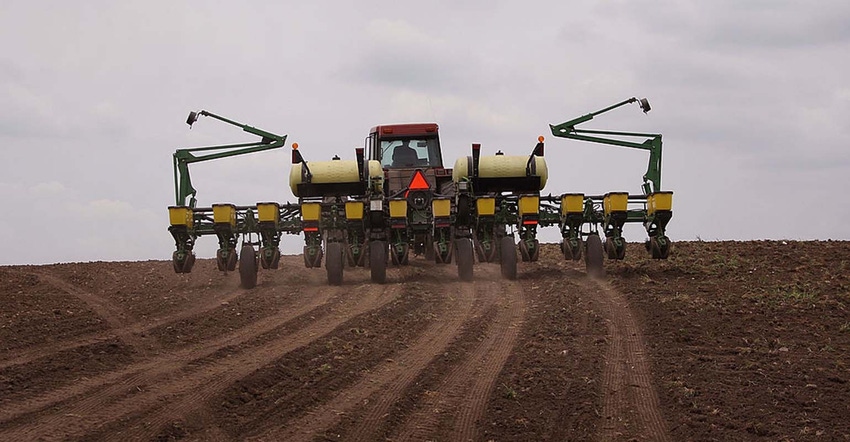
We all have that moment: we are planting a crop, look in the rearview mirror, and think, “I hope I’m doing the right thing.” Like the Howard Buffett book suggests, we only have 40 chances to produce a crop over our lifetime. I don’t want to mess up even one of those 40 chances.
This was one of those springs where I second guessed myself just about every day I was putting seed in the ground. I finished replanting soybeans into dry June ground a long 80 days after I started planting corn into the March dust. In that 80 day period, we experienced near freezing temperatures, several inch downpours and hot, dry stretches.
I no-tilled the first field of corn March 18. Even though March corn has worked well for us in the past, I always feel nervous planting while wearing a sweatshirt in a heated tractor cab. The March corn planted well, but then the weather turned cold and rainy. I couldn’t plant again until mid-April. That first day back in corn, I jumped the gun and planted into ground that was too wet. That field had uneven emergence and the end rows only came up in spots. I have a daily reminder of my decision when I drive by that farm. As I look back on my decision to plant that field, I remember thinking it was a little too wet, but also thinking I had several days of planting in front of me. The weather forecast was calling for rain.
Points of concern
Soybean population and stand have been points of concern all season. We started no-tilling soybeans on April 10 into cereal rye with an air seeder. When it comes to soybean population, there is a fine line between spending too much on seed versus not planting enough seeds to get a good stand. We settled on 160,000 seeds per acre. As a result of a wet, cold stretch, we ended up replanting 15% of soybean acres. There was a point where I was ready to tear up most of our soybean acres and start fresh. Now we are trying to manage resistant weeds.
What does this reflecting have to do with management? Sometimes, we blindly make decisions and never look back. I always look in the mirror to see how the field is planting, and it’s important to also do that reflection from a management standpoint. This year has been a good year to reflect on what worked and what we could have done better.
My landlord and quasi-business coach told me that management is only a fancy term for thinking a little more about what you are doing. Reflection is just that; thinking a little more about things and planning to improve on those things the next year.
The opinions of the author are not necessarily those of Farm Futures or Penton Agriculture.
About the Author(s)
You May Also Like






